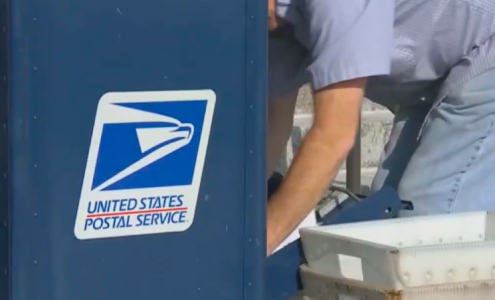Shocking USPS price hike: How much more will your summer mail cost you?
- Replies 0
As summer approaches, a new challenge is on the horizon: rising mailing costs.
The United States Postal Service (USPS) has announced upcoming price hikes that could affect a wide range of services.
What might these changes mean for your budget and everyday needs?
The USPS remains a cornerstone of American communication, delivering mail and packages to nearly 169 million addresses nationwide.
However, financial troubles have plagued the agency for years.

Since 2007, the USPS has lost more than $100 billion, including a $9.5 billion deficit in the fiscal year ending September 30, 2024.
In an effort to recover, the USPS has introduced major changes to its pricing and mailing standards—part of a broader strategy first launched under the Trump administration to cut losses and boost efficiency.
On April 9, the USPS officially filed notice of upcoming rate adjustments.

Beginning July 13, the cost of a First-Class Mail Forever stamp will rise from 73 cents to 78 cents—a 5-cent increase.
But that’s just the start. Additional changes include:
Public response has been divided. Some view the changes as a necessary step toward modernization; others see it as another burden on consumers.
Kevin Thompson, CEO of 9i Capital Group, told Newsweek that the government is "trying to reduce USPS's ongoing losses and run it more like a business."
However, he emphasized that USPS still plays an essential role in delivering to areas private carriers won't reach.
Alex Beene, a financial literacy instructor at the University of Tennessee at Martin, noted that this is just the latest in a series of price hikes over the past four years.
Beene believes the long-term goal is to create a more sustainable and eventually profitable postal service model through higher prices and technological upgrades.
These new changes align with broader discussions about the future of the USPS.
During his administration, President Donald Trump expressed support for privatizing the postal service, even proposing to move it under the jurisdiction of the Commerce Department.
While the current focus is on cost-cutting and modernization, critics worry that higher prices and reduced mailing options could disproportionately impact rural communities, small businesses, and everyday Americans who rely heavily on affordable mail services.
Starting this summer, sending mail will cost more—whether it’s birthday cards, business invoices, or care packages.
Consumers and small businesses alike will need to adjust budgets and explore alternative communication methods where possible.
Read more:

Have rising USPS prices changed your mailing habits? Are you exploring digital alternatives or still committed to traditional mail? Share your thoughts with our community in the comments below. Let’s discuss how we can adapt while preserving the important human connections mail brings.
The United States Postal Service (USPS) has announced upcoming price hikes that could affect a wide range of services.
What might these changes mean for your budget and everyday needs?
The USPS remains a cornerstone of American communication, delivering mail and packages to nearly 169 million addresses nationwide.
However, financial troubles have plagued the agency for years.

The USPS remains a cornerstone of American communication. Image Source: Local 22 & Local 24 /YouTube
Since 2007, the USPS has lost more than $100 billion, including a $9.5 billion deficit in the fiscal year ending September 30, 2024.
In an effort to recover, the USPS has introduced major changes to its pricing and mailing standards—part of a broader strategy first launched under the Trump administration to cut losses and boost efficiency.
On April 9, the USPS officially filed notice of upcoming rate adjustments.

Starting this summer, sending mail will cost more, whether it’s birthday cards, business invoices, or care packages. Image Source: WKYC Channel 3 / YouTube
Beginning July 13, the cost of a First-Class Mail Forever stamp will rise from 73 cents to 78 cents—a 5-cent increase.
But that’s just the start. Additional changes include:
- Simplifying mail preparation and bundling standards to streamline operations.
- Eliminating certain categories, including marketing mail, commercial, and nonprofit automation, basic carrier route options that no longer yield cost savings.
- Removing Bound Printed Matter from the market-dominant product list, moving flat-rate items into USPS Marketing Mail, and introducing a new "Heavy Printed Matter" category for parcels weighing up to 15 pounds.
Public response has been divided. Some view the changes as a necessary step toward modernization; others see it as another burden on consumers.
Kevin Thompson, CEO of 9i Capital Group, told Newsweek that the government is "trying to reduce USPS's ongoing losses and run it more like a business."
However, he emphasized that USPS still plays an essential role in delivering to areas private carriers won't reach.
Alex Beene, a financial literacy instructor at the University of Tennessee at Martin, noted that this is just the latest in a series of price hikes over the past four years.
Beene believes the long-term goal is to create a more sustainable and eventually profitable postal service model through higher prices and technological upgrades.
These new changes align with broader discussions about the future of the USPS.
During his administration, President Donald Trump expressed support for privatizing the postal service, even proposing to move it under the jurisdiction of the Commerce Department.
While the current focus is on cost-cutting and modernization, critics worry that higher prices and reduced mailing options could disproportionately impact rural communities, small businesses, and everyday Americans who rely heavily on affordable mail services.
Starting this summer, sending mail will cost more—whether it’s birthday cards, business invoices, or care packages.
Consumers and small businesses alike will need to adjust budgets and explore alternative communication methods where possible.
Read more:
- USPS under fire: Lawmaker blasts mail delivery failures!
- Is your mail at risk? Supreme Court to review USPS over delivery discrimination claims
Key Takeaways
- The USPS is raising the price of a First-Class Mail Forever stamp by 5 cents starting July 13.
- Broader changes include eliminating some mail categories and introducing a new "Heavy Printed Matter" classification.
- Overall mailing services costs are expected to rise by 7.4% to help modernize and stabilize the USPS’s financial position.
- Experts say the USPS is trying to operate more like a business, but concerns remain about accessibility and affordability for consumers.






